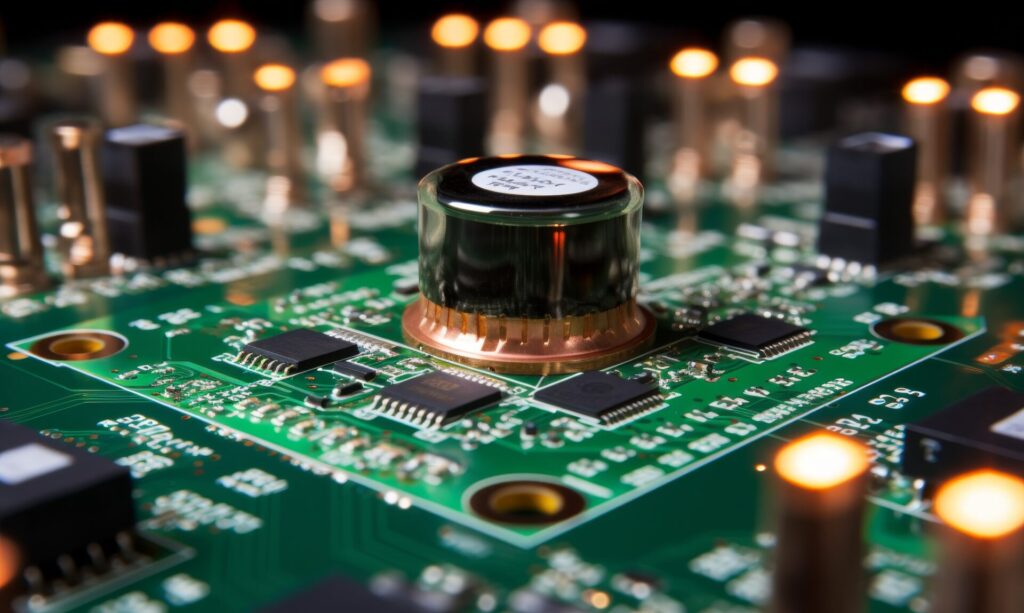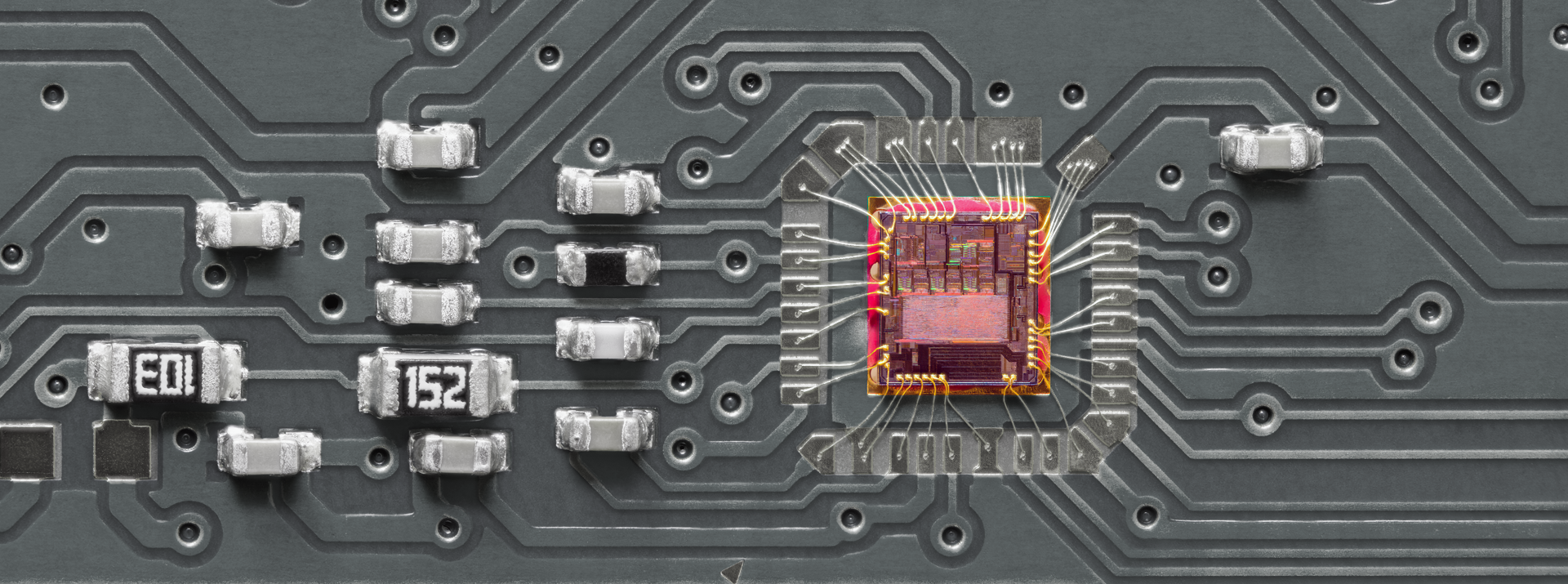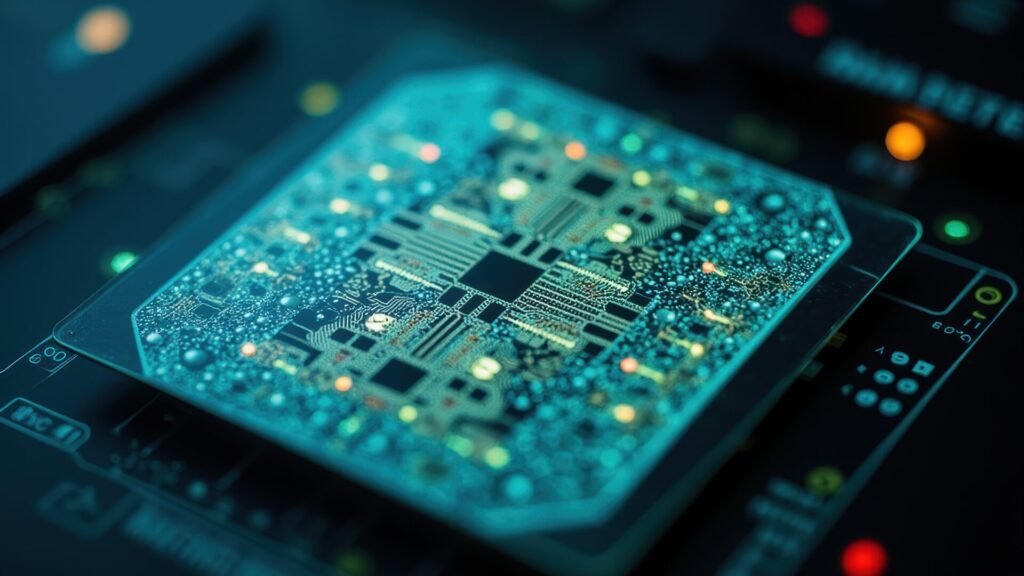
- Photonics
Technological Trends in Optical Sensors for Biological Sensing Applications
Based on our previous article’s explanation of SWIR technology fundamentals, we will discuss non-invasive biosensing technology, which is gaining attention as a specific application.
Contents
Global Increase in Diabetes Patients
In recent years, global economic development and accompanying dietary changes have led to a worldwide increase in diabetes patients and those at risk. According to the International Diabetes Federation (IDF)*, the global diabetic population of 540 million in 2021 is projected to reach 780 million by 2045.
*Diabetes Facts and Figures | International Diabetes Federation
The global increase in diabetes creates social issues including rising medical costs, reduced quality of life, and increased societal burden.
Blood glucose control is crucial in diabetes treatment. For diabetic patients, the fundamental approach to treatment combines dietary and exercise therapy with oral medications or insulin injections to maintain stable blood glucose levels. Therefore, patients must constantly monitor their blood glucose levels in daily life. Various blood glucose monitoring devices are used for this purpose.
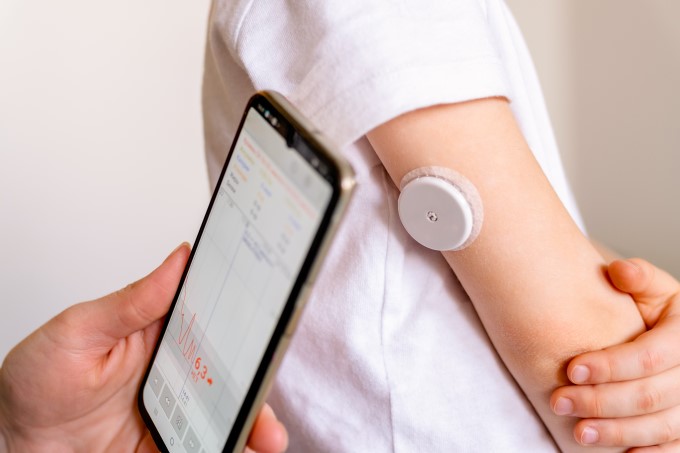
Challenges in Blood Glucose Measurement: From Invasive to Non-invasive Methods
There are two methods for blood glucose measurement. The first is SMBG (Self Monitoring of Blood Glucose), which measures glucose in blood drawn from fingertips. The second is CGM (Continuous Glucose Monitoring), which continuously measures blood glucose using a patch-type sensor worn on the arm. Until recently, both SMBG and CGM methods typically used “invasive” approaches requiring needles to penetrate subcutaneous tissue. However, with advances in sensor technology, development of “non-invasive” sensors that can measure blood glucose from above the skin is now progressing.
The transition from invasive to non-invasive measurement brings multiple significant benefits to diabetes patients. The first benefit is the elimination of pain associated with needle insertion for blood sampling. Though the sampling needles are very thin and cause minimal pain, discomfort during each test cannot be avoided. This is particularly problematic for small children with diabetes who often fear injections, which can hinder treatment.
Another issue with blood sampling is that repeated injections at the same site can cause skin hardening. Therefore, injection sites must be constantly rotated. In contrast, non-invasive CGM devices measure from above the skin. Once attached, they enable continuous monitoring for 10 days to 2 weeks without causing pain.
The second major benefit for patients is financial. Invasive SMBG devices require replacement of lancets and glucose sensors for each test. The device itself costs $64.30-$96.46 (based on an exchange rate of ¥155.51 to $1 as of January 2025). The per-test sensor and lancet costs are $0.96-$1.29. Testing three times daily (morning, noon, evening) results in annual expenses around $128.61, even with health insurance coverage. Non-invasive devices eliminate consumable components, requiring only the initial device purchase. (Individual costs vary by country/region and insurance coverage.)
With the global diabetic population trending upward, the blood glucose monitoring market is expected to expand significantly. Various companies worldwide are racing to develop wearable devices incorporating new non-invasive sensors to enter this market.
Optical Sensors Used in Biosensing
The core technology in non-invasive biosensors for wearable devices utilizes optical properties like SWIR that we explained in our previous article. (Please refer to the basics section for detailed optical properties.) The diagram below illustrates Dexerials’ SWIR reflective sensor design.
In the left illustration, light reflects when hitting inorganic substances. In contrast, in the right illustration, light penetrates the fingertip (biological tissue) and reaches internal layers. Some light is absorbed by water and biological substances, returning to the sensor in an attenuated state. Biosensors using optical semiconductors measure various wavelengths of light. They detect target substances by measuring the amount of light absorption.
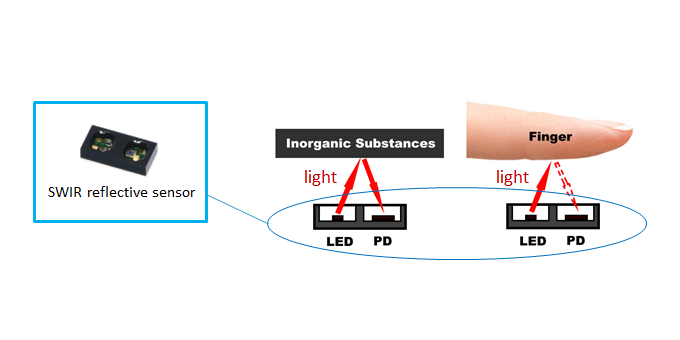
At Dexerials, we have developed various components for biosensors designed specifically for integration into wearable devices. Let us now explain these products in detail.
Two-color detectors (KP-2 Series)
Dexerials’ Two-color detectors features a unique design. It combines Si-based and InGaAs-based photodiodes with different bandgaps in the same package. This enables detection across a broad wavelength range of 400-1700 nm on a single optical axis.
Material composition:
- Si-based photodiode: Visible/near-infrared region (400-1000 nm)
- InGaAs-based photodiode: Infrared/near-infrared region (900-1700 nm)
Blood biomarkers like glucose and hemoglobin react at specific wavelengths. This requires detection across a broad spectrum range. Through this innovation, we have achieved simultaneous detection of various biomarkers in a single package device. Previously, separate sensors were needed for each marker. *Water strongly absorbs at 1450 nm, glucose at 1600 nm, oxyhemoglobin at 940 nm, and reduced hemoglobin at 660 nm.
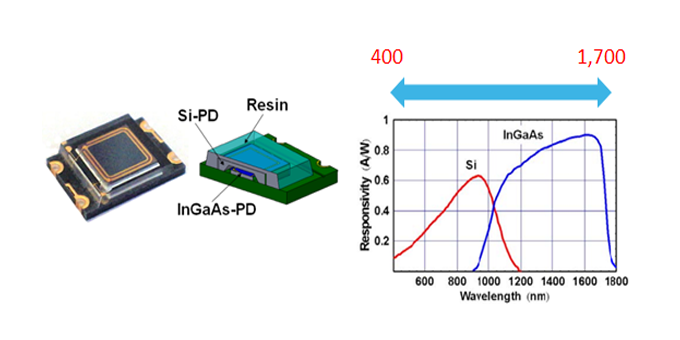
Furthermore, this single-package implementation achieves ultra-compact dimensions: 1.1 mm thickness, 4 mm width, and 5.7 mm length. This miniaturization enables integration into wearable devices like smartwatches. These Two-color detectors represent a breakthrough combining materials science and semiconductor technology.
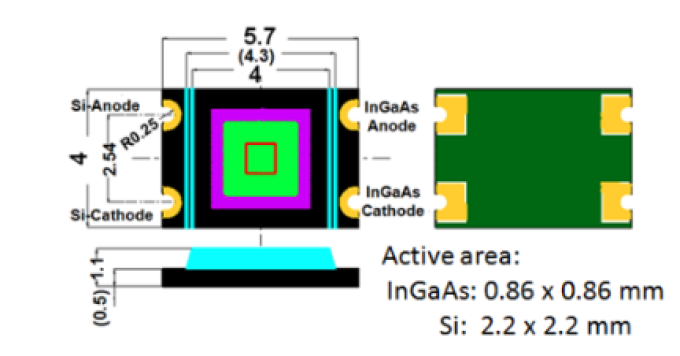
The Two-color detectors are designed for devices such as pulse oximeters that measure blood oxygen saturation and carbon monoxide levels, and non-invasive glucose monitors. Due to its broad wavelength coverage, it also has potential applications in optical communication equipment and 5G communication devices beyond medical and healthcare uses.
SWIR-type Reflective Sensor
Another Dexerials product for medical and wearable applications is the “SWIR-type reflective sensor.” The SWIR wavelength range is 900-1700 nm. Because this range is readily absorbed by water, glucose, and hemoglobin, it is advancing in biosensor applications.
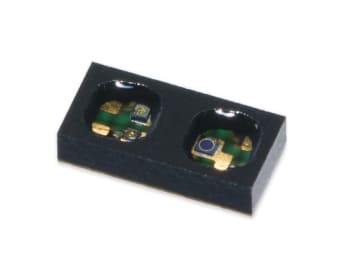
The sensor’s key feature is its compact package design that integrates both an LED emitting SWIR light and a PD capturing reflected light in one unit. Another significant advantage is its adaptability to various wavelengths depending on the target biomarker.
The dual-element type incorporates a 1450 nm LED for moisture content sensing. The triple-element type features LEDs at 810 nm and 1300 nm for measuring blood hematocrit levels.
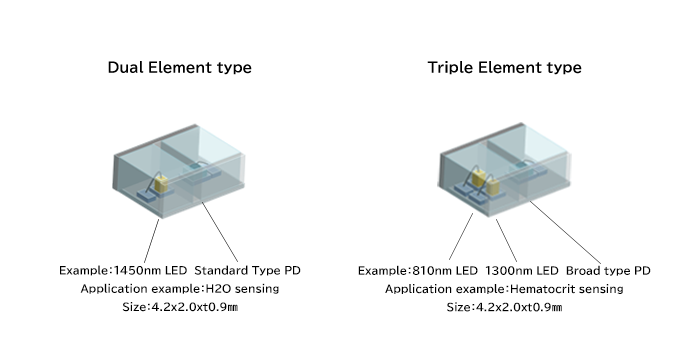
Biosensing technology using wearable devices continues to advance. Through developments in sensor technology and AI analysis, more accurate real-time biological data acquisition is becoming possible. These technological innovations are expected to bring new possibilities to medical advancement.
At Dexerials, we aim to contribute to global health by developing products that enhance various sensor capabilities.
- SHARE
 Back to top
Back to top  Contact us
Contact us 




